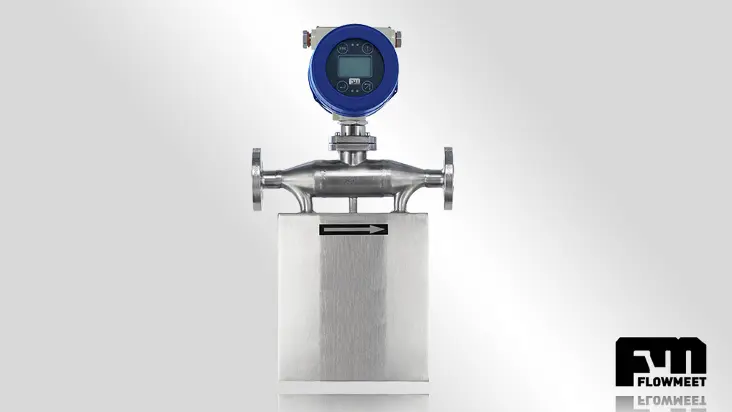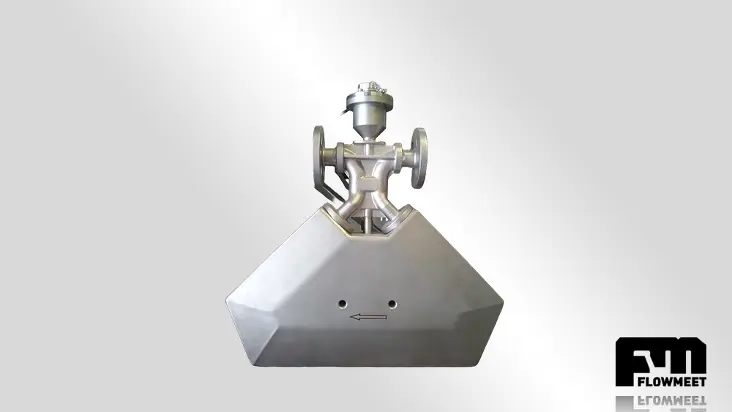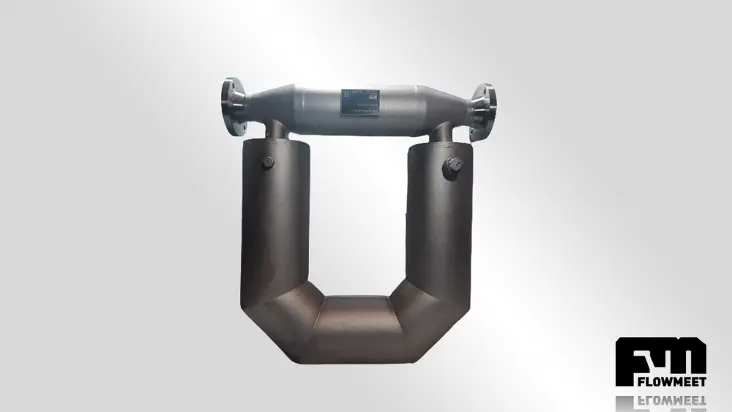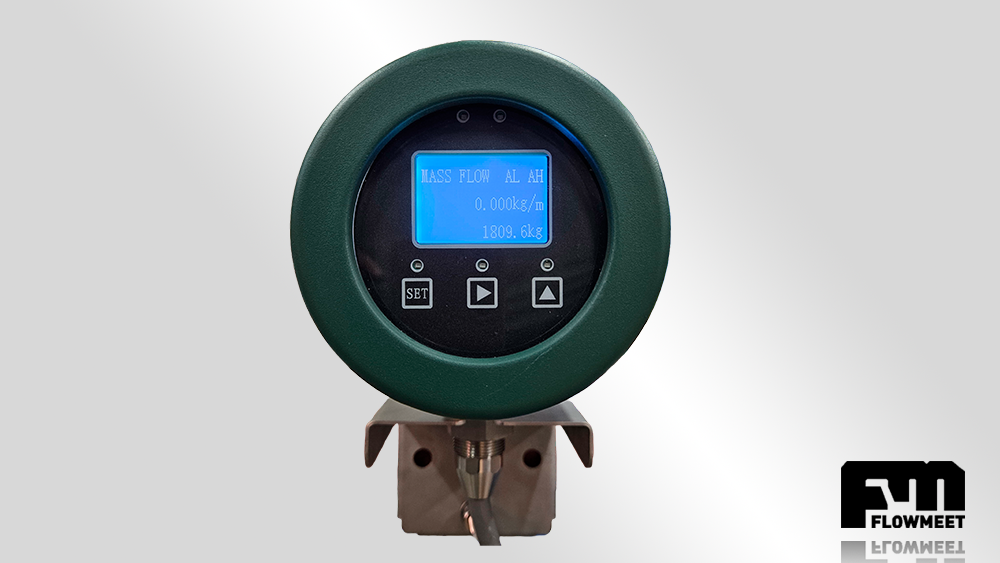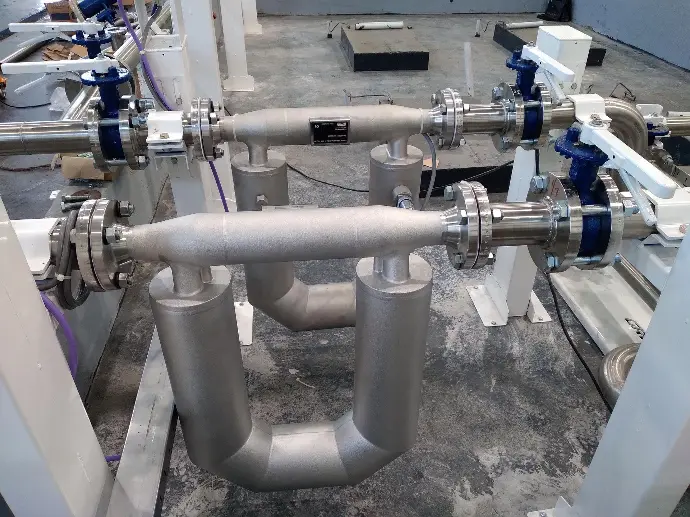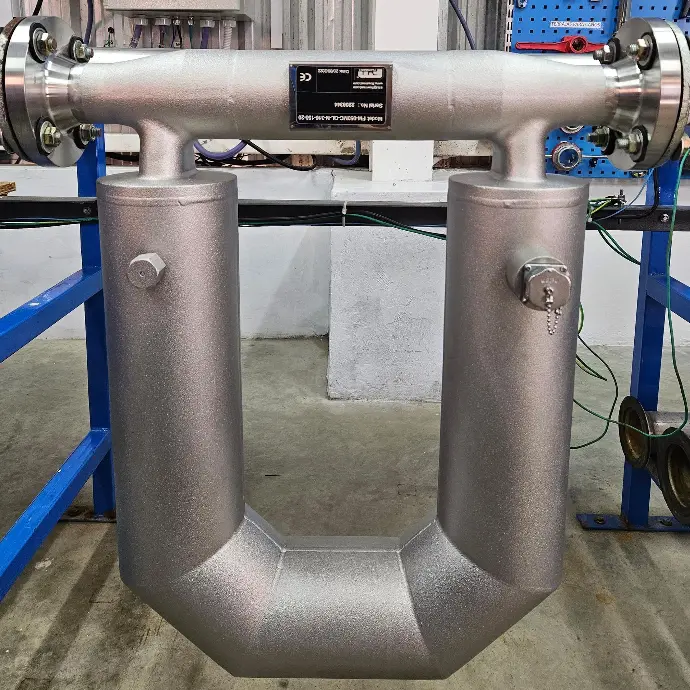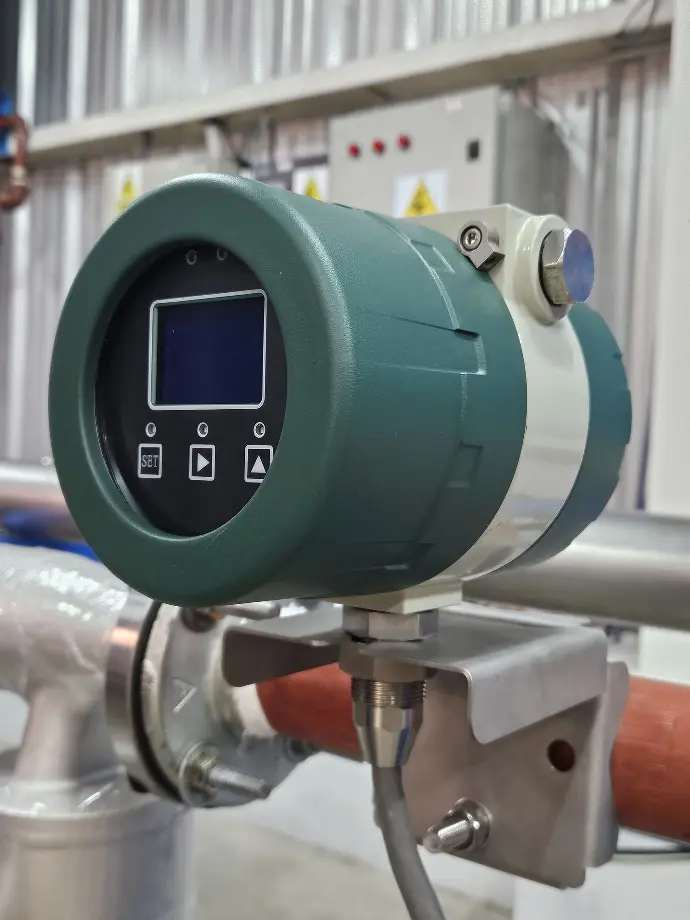
we think about measurement
Caudalímetro másico Coriolis
Serie MC
Los caudalímetros másicos Coriolis FLOWMEET de la serie MC disponen del método de medición más preciso tanto para la medición de líquidos como la de gases. Los caudalímetros Coriolis pueden medir prácticamente cualquier fluido: productos de limpieza, disolventes, combustibles, petróleo crudo, gases o gases licuados. Constan de un sensor y un computador. El caudalímetro másico Coriolis, dispone de un equipo de transmisión digital basado en un procesador digital de señales (DSP). Dicho procesador integra el tratamiento de una señal de vibración a través de un control digital de tipo bucle cerrado. La configuración del nodo en línea, el diagnóstico de fallas y el registro de datos pueden ser transferidos a través del computador, por conexión HART o a través de comunicación Modbus RS-485 hacia una PC. El computador no sólo calcula el caudal del proceso, el volumen acumulado y la composición del fluido a medir, sino que también proporciona en tiempo real el caudal másico, la densidad y la temperatura.
Archivos de descarga
Manual de usuario Serie MC (SPA)
| SS316L | SS316L | SS316L | SS316L | SS316L | SS316L |
| SS304 | SS304 | SS304 | SS304 | SS304 | SS304 |
| Exd (ia) II C T6Gb | Exd (ia) II C T6Gb | Exd (ia) II C T6Gb | Exd (ia) II C T6Gb | Exd (ia) II C T6Gb | Exd (ia) II C T6Gb |
| IP67 | IP67 | IP67 | IP67 | IP67 | IP67 |
| 0.06 - 3Tn/h |
0.06 - 7.2Tn/h
|
0.2 a 10 Tn/h
|
0.6 a 30 Tn/h | 0.96 a 48 Tn/h | 2.4 a 120 Tn/h |
| 1/2" ASME/ANSI #150 | 3/4" ASME/ANSI #150 | 1" ASME/ANSI #150 | 1 1/2" ASME/ANSI #150 | 2" ASME/ANSI #150 | 3" ASME/ANSI #150 |
| < 0.2% / < 0.1% | < 0.2% / < 0.1% | < 0.2% / < 0.1% | < 0.2% / < 0.1% | < 0.2% / < 0.1% | < 0.2% / < 0.1% |
| -200 a +200ºC | -200 a +200ºC | -200 a +200ºC | -200 a +200ºC | -200 a +200ºC | -200 a +200ºC |
| -20ºC a 60ºC | -20ºC a 60ºC | -20ºC a 60ºC | -20ºC a 60ºC | -20ºC a 60ºC | -20ºC a 60ºC |
| 4-20mA, Pulsos | 4-20mA, Pulsos |
4-20mA, Pulsos |
4-20mA, Pulsos |
4-20mA, Pulsos |
4-20mA, Pulsos |
|
0.5~2g/cm3, ±0.002 g/cm3
|
0.5~2g/cm3, ±0.002 g/cm3
|
0.5~2g/cm3, ±0.002 g/cm3
|
0.5~2g/cm3, ±0.002 g/cm3
|
0.5~2g/cm3, ±0.002 g/cm3
|
0.5~2g/cm3, ±0.002 g/cm3
|
| MODBUS RS-485 | MODBUS RS-485 | MODBUS RS-485 | MODBUS RS-485 | MODBUS RS-485 | MODBUS RS-485 |
| 24 VDC | 24 VDC | 24 VDC | 24 VDC | 24 VDC | 24 VDC |
Datos técnicos:
La serie MC ofrece un rendimiento superior de alta precisión en prácticamente cualquier aplicación. Es adecuada para el control de procesos en aplicaciones petroquímicas hasta mediciones de concentración en la industria alimentaria y de bebidas y mediciones de transferencia de custodia en la industria del petróleo y el gas. La serie MC representa el dispositivo óptimo para medios criogénicos como el gas natural licuado (GNL) con temperaturas de hasta -200 °C, también es adecuada para aplicaciones que implican altas temperaturas de funcionamiento (hasta 350 °C) o presiones (hasta 1000 barg / 14504 psig).
Características principales:
- Para todas las industrias y todas las aplicaciones de transferencia de procesos y control.
- Principio de medición universal para líquidos y gases.
- Medición multivariable: medición simultánea de caudal másico, densidad, temperatura.
- Alta precisión de medición: típicamente ± 0,2%, ± 0,1%, opcional: ± 0,05%.
- Principio de medición independiente de las propiedades físicas del fluido y del perfil de flujo.
- Fácil de instalar (bajo riesgo de inclusión de burbujas de gas).
- No es necesario recalibrar al cambiar de fluido.
- No necesita instalación en línea recta.
- No necesita compensación de temperatura ni de presión.
- No requiere recalibración periódica.
Aplicaciones más comunes
Los caudalímetros másicos Coriolis son el método de medición más preciso del mundo. El principio de medición Coriolis se utiliza en una amplia gama de diferentes ramas de la industria, tales como:
- Productos químicos.
- Productos petroquímicos.
- Petróleo.
- Gas.
- Alimentación: vinagre, salsa de tomate, mayonesa, soluciones de frutas.
- Aplicaciones de transferencia de control.
- Aceites vegetales.
- Grasa animal.
- Detergentes.
- Látex.
- Aceites de silicona.
- Alcohol.
- Pasta dentífrica.
Principio de funcionamiento de caudalímetro másico Coriolis
Cada caudalímetro Coriolis tiene uno o varios tubos de medición que oscilan físicamente mediante un excitador. En cuanto el fluido comienza a circular por el tubo de medición, se impone un par adicional a esta oscilación debido a la inercia del fluido. Dos sensores, situados en ambos extremos de los tubos, detectan este cambio en la oscilación del tubo en el tiempo y el espacio como «diferencia de fase». Esta diferencia es una medida directa del caudal másico. Además, la densidad del fluido también puede determinarse a partir de la frecuencia de oscilación de los tubos de medición. También se registra la temperatura del tubo de medición para compensar las influencias térmicas.
La diferencia de fase es proporcional al caudal másico.
La frecuencia de oscilación es proporcional a la densidad.
